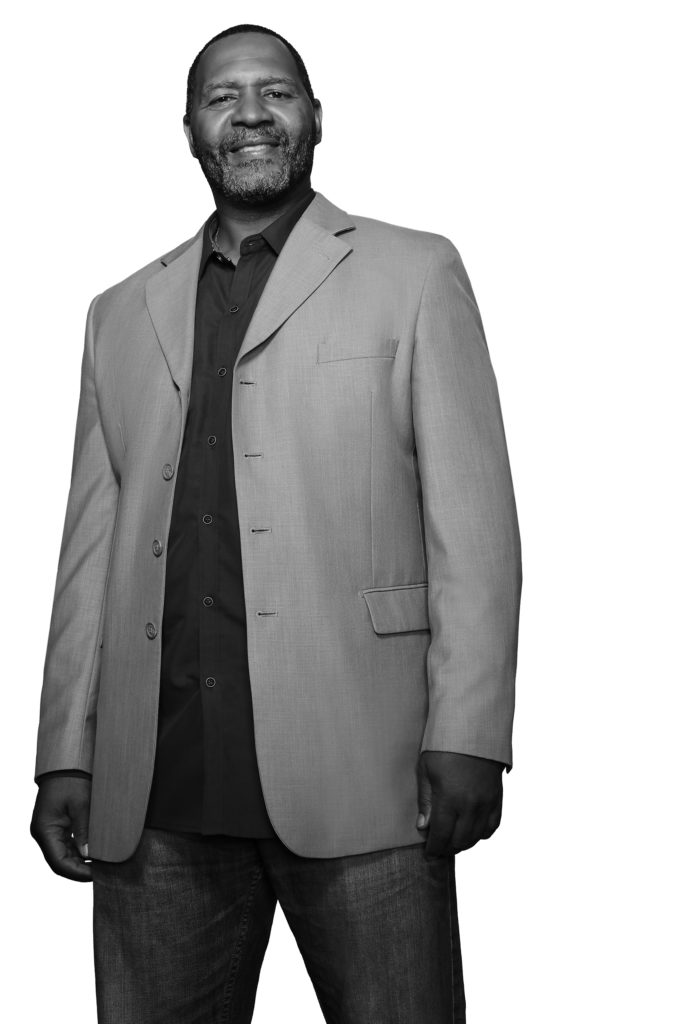
Derrick Gathers, younger brother to Hank Gathers, played basketball at California State University, Northridge. The brothers were teammates at Dobbins Technical High School, home to a legendary Philadelphia basketball team that included future pros Bo Kimble and Doug Overton. Derrick Gathers talked with us about his brother in the Fine Arts Studio of Rotblatt-Amrany, outside Chicago, where a statue memorializing Hank Gathers has been sculpted for installation at LMU.
Hank was as well-known for his winning personality as for his basketball skills. Where did his personality come from?
I would imagine some from my dad, and probably most of it from my mom. She has a personality that people just gravitate toward. She’s a loving, caring person. When she comes in the room, she lights the room up. People gravitate to her.
Was Hank always the guy who people were drawn to?
Certainly. He found the light in every darkness.
What did most people not know about Hank if they saw him only on the court?
If you saw the basketball side of him, you’d think he was a beast, the way he played ball. But if you caught him off the court, he was a very loving, kind, giving individual. My big brother always gave, to me and my brother Charles. He was always looking to help strangers or others who were less fortunate.
Why do you think Hank performed so well in Paul Westhead’s system?
Where we’re from — North Philly — you have to make your way. You had to score or get scored upon. You had to take, or get taken from. So, Westhead’s system was tailor-made for my brother and Bo, and history was made.
Why did Hank wear No. 44?
Hank Aaron was my brother’s favorite baseball player, and we all know the story of Hank Aaron. So, in 1983 while in high school, my brother had a son. He named his son Aaron. Hank wore 24 in high school, so when he got to college he changed his number from 24 to 44.
Many people have said that Hank simply loved basketball. Why did he?
My brother just loved the game because it was an avenue for us to get out of the projects. He had an opportunity: A door opened for him at LMU, with Paul Westhead’s system, and he kicked the door in and did what he had to do to make a name for himself and make a legacy for the family — not only LMU’s family but my family as well, my mom and his brothers. It’s wonderful to be part of that, to witness it with my own eyes.
As we speak, we’re sitting in the studio where the statue of your brother, behind you, has been sculpted. What do you think about when you imagine the unveiling on the LMU campus?
I’m holding back tears. When people get to see the statue, you’re going to see a lot of tears being shed, a lot of fond memories coming back to mind. People will not think about tragedy, just the love of a university, the camaraderie, the family coming together — Jeff Fryer, Tom Peabody, Bo Kimble, Paul Westhead, Jay Hillock. We formed a family. It will be great to have all these guys come back together and see my mom, who they know well. She was in the stands in Gersten Pavilion many times. I’m so happy that my mom will get to see it. Hank knew he could’ve passed, but he once said he didn’t care as long as his mom was taken care of. That’s the type of guy he was. He loved my mom, and I love my mom. And I take care of her to this day.
